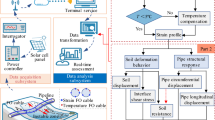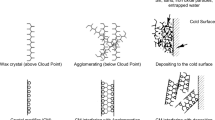Abstract
We present the concept and main purposes of the Comprehensive Program of Measures on Preventing Failures and Improving the Operational Erosion-Corrosion Resistance of Equipment and Pipelines at Nuclear Power Stations developed at Rosenergoatom, as well as the first results obtained from work on implementing this program. We also describe new approaches, principles, and methods for identifying the dominating mechanism of thinning, for evaluating and extending residual erosion-corrosion service life, and for carrying out calculated-analytical justification of making corrections to typical programs for operational surveillance of the metal of nuclear power station pipelines and equipment. Practical possibilities of using the RAMEK software system for simulating local erosion-corrosion processes occurring in the metal of a condensate-feedwater path are demonstrated taking as an example the results of a study on determining factors and dominating mechanism that caused thinning to occur in the metal of the line bypassing the feedwater pipeline of a nuclear power station unit.
Similar content being viewed by others
References
V. N. Lovchev, “Ensuring Operational Erosion-Corrosion Resistance of Pipelines and Equipment at Nuclear Power Stations,” Rosenergoatom, No. 6, 48–51 (2006).
G. Bezdikian, Nuclear Power Plant Management: An Overview of Identification of Key Components in Relation with Degradation Mechanism, IAEA Guidelines, 2005.
O. A. Povarov and G. V. Tomarov, “Erosion-Corrosion of Metals of Power-Generating Equipment in Singleand Two-Phase Flows,” Tyazh. Mashinostr., No. 8, 16–22 (2002).
G. V. Tomarov and A. A. Shipkov, “Simulation of Physicochemical Processes through Which Erosion-Corrosion Occurs in Metals in Two-Phase Flows,” Teploenergetika, No. 7, 7–17 (2002) [Therm. Eng., No. 7 (2002)].
G. V. Tomarov and A. A. Shipkov, “A Matrix of Hydrodynamic Coefficients and Zones of Local Erosion-Corrosion in Components of Nuclear and Thermal Power Stations,” Energosber. Vodopodg. No. 3, 17–22 (2008).
G. V. Tomarov, A. A. Shipkov, V. N. Semenov, and M. μV. Kasimovskii, “Improving the Efficiency with Which the State of Main Metal of NPS Equipment and Pipelines is Checked during Operation,” Tyazh. Mashinostr., No. 1, 12–15 (2007).
Author information
Authors and Affiliations
Additional information
Original Russian Text © V.N. Lovchev, D.F. Gutsev, G.V. Tomarov, A.A. Shipkov, 2009, published in Teploenergetika.
Rights and permissions
About this article
Cite this article
Lovchev, V.N., Gutsev, D.F., Tomarov, G.V. et al. Improvement and optimization of techniques for monitoring erosion-corrosion wear of equipment and pipelines at nuclear power stations. Therm. Eng. 56, 134–141 (2009). https://doi.org/10.1134/S0040601509020086
Published:
Issue Date:
DOI: https://doi.org/10.1134/S0040601509020086




